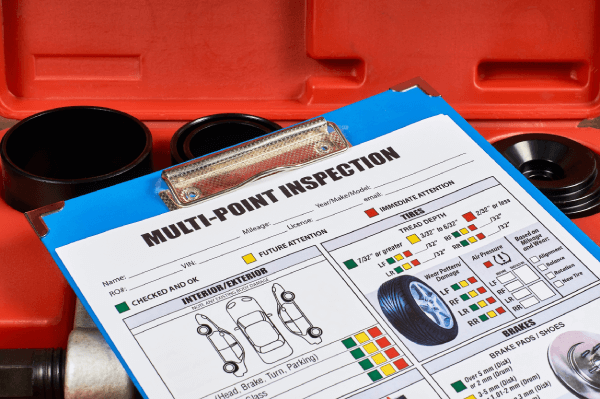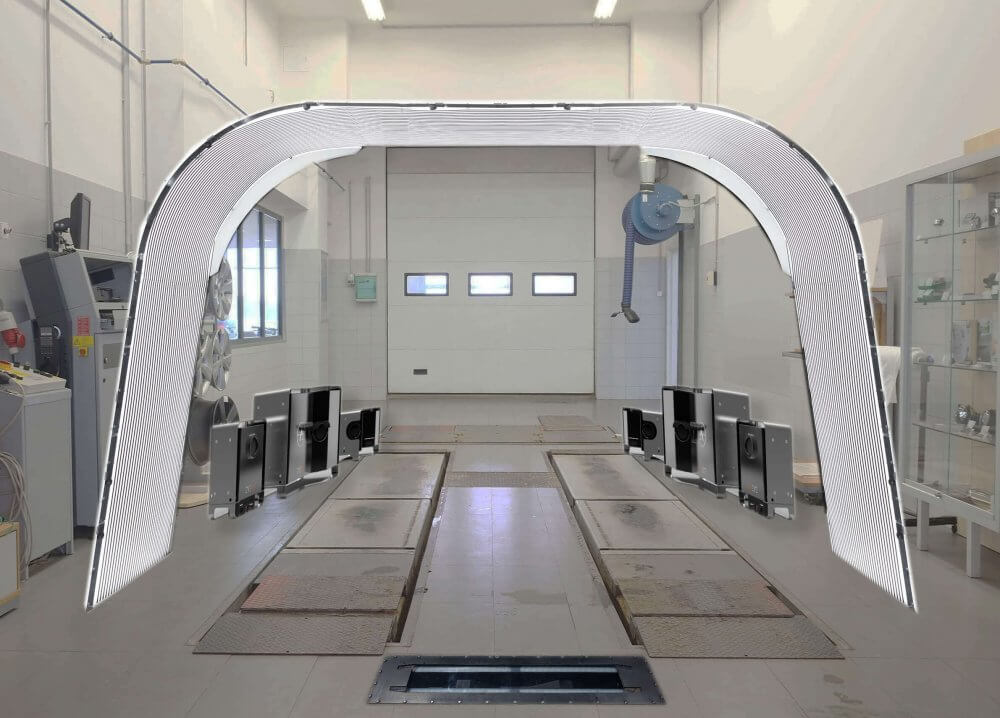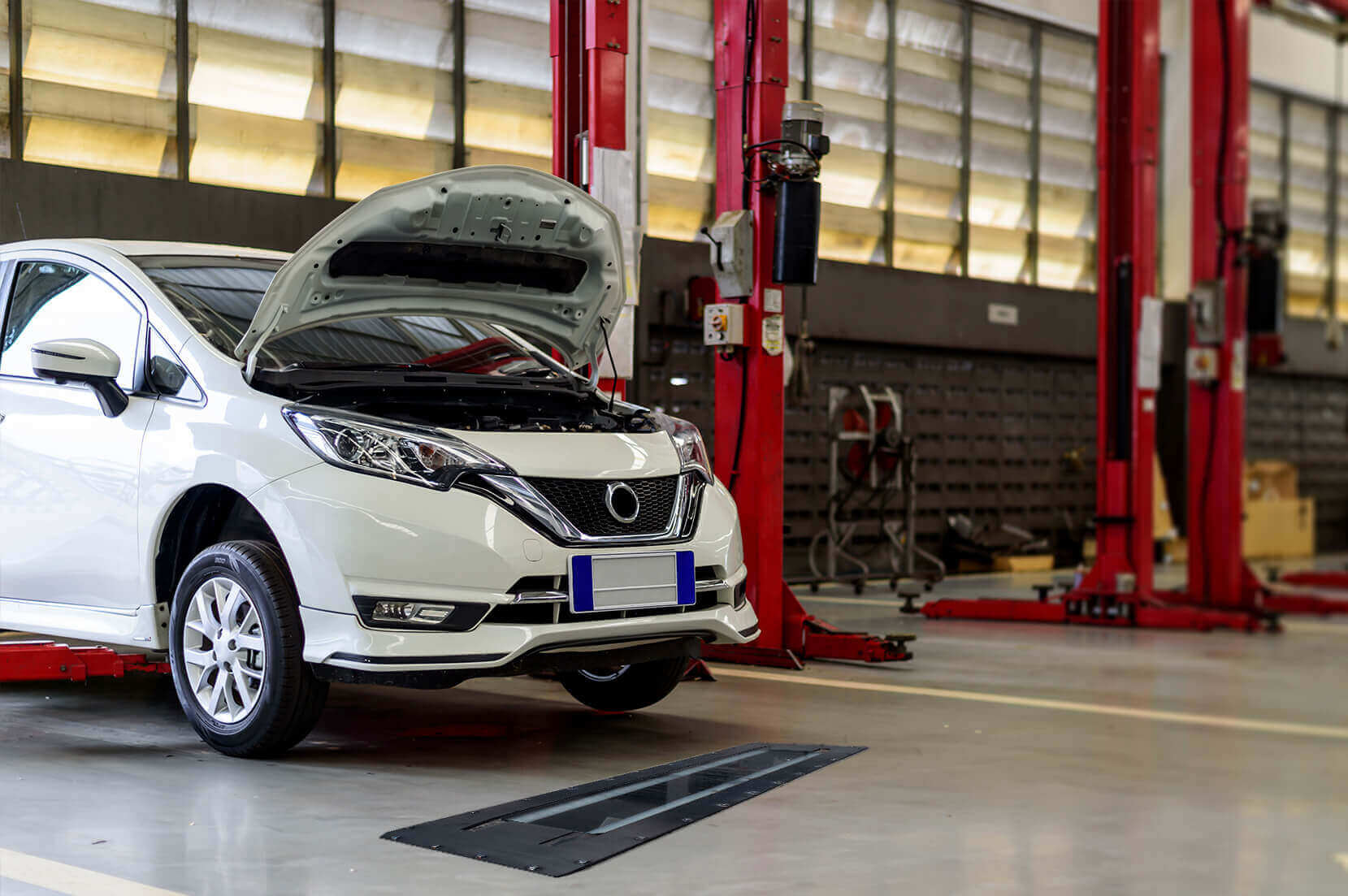Multi-point Inspection at the Dealership. Why is It Necessary?
What is It and Why is It Necessary?
A car owner enters the service drive at the dealership. They have an appointment to have their oil changed and perhaps their tires need to be rotated. Easy enough, right?
A service advisor greets them and confirms their details, then performs a quick walkaround to identify any obvious damage or issues. So far, it’s all very mundane – there’s a seasonal service package that includes the oil and filter change, tire rotation, and a multi-point inspection is included at no extra charge.
An oil change is routine, and a tire rotation is scheduled maintenance. But why is the multi-point inspection necessary when the service advisor has already done a walkaround? That’s a question customers have consistently.
A Multi-point Inspection is Important. Here’s Why.
The walkaround a service advisor performs on a vehicle they’re checking in is a great start. They’re looking for pre-existing damage that’s visible, tire condition, an opportunity to engage the customer in their knowledge of vehicle performance since last service, year/make/model of the vehicle, and accurate mileage. Often the service advisor catches torn wiper blades and abnormal tire wear, not to mention burnt-out bulbs and the like.
In almost every instance, the service advisor is a liaison between the technician and the customer. They are the customer’s consultant that helps them understand the maintenance, or repair, needs of the vehicle. Given the importance of Customer Experience (CX) in the dealership, the service advisor does not have the time available to thoroughly inspect and present issues to the customer while the customer is still on the service drive.
This thorough inspection is the domain of the technician, utilizing a multi-point inspection (MPI) process. This inspection is performed by someone who knows what to look for, and a professional who has the tools to dig deeper and find the actual issues.

It’s Tangible for the Customer
With a multi-point inspection, the technician goes through a list of components and systems on a checklist. Sometimes the data entry platform is digital, but mostly paper checklists are still widely used. Either way, the inspection is manual, regardless of how the data is entered.
As items are inspected, they’re checked off on the list as green, yellow, or red. Green means it’s good, yellow indicates future attention will be required, and red means it needs to be handled now. And once the inspection is complete, a physical copy goes into the hands of the car owner. Now it’s no longer just a service advisor recommending maintenance or repairs – a technician has tangibly confirmed the necessity.
It Builds Trust with the Car Owner
More than finding problems that can be sold to the customer, multi-point inspections are amazing at building a trusting relationship. How does that happen? When MPIs are performed on every service visit, to the exact same standard every time, the car owner can count on a consistent CX for service. Consistency and transparency are two main driving factors for improving CX.
Trust is a big deal in the automotive industry. Customer retention is built on long-term value creation and sharing between the service department and the customer. This is achieved over time and by consistently delivering improved experiences and services to the consumer. The goal for retention is not just today’s service visit, but rather, a lifetime customer value opportunity.
It Protects the Shop
If you’ve ever had a customer say, “That scratch wasn’t there before,” then there likely wasn’t a proper walkaround and MPI performed. When a customer knows that an inspection was done, your shop has been protected from an expensive repair by a consistent operating process performed internally by dealer personnel. The inspection process, whether digital or paper, indicates known and identifiable damages.
What a Proper Multi-point Inspection Covers
Every shop has an MPI checklist for technicians to work through as they look over a car. The major components (not exhaustive) a multi-point inspection covers include:
• Exterior condition – The technician inspects for broken handles, damaged panels, cracked or chipped glass, and overall body condition.
• Lighting and accessories – The headlights, taillights, and all other exterior and interior lighting is checked along with wiper blades.
• Major mechanical operation – how the engine, transmission, and drive train operate are key components to the MPI, as well as an inspection for fluid leaks.
• Warning lights – The instrument cluster is checked for an illuminated Check Engine Light, ABS Light, Airbag Light, TPMS light, or any other warning lights.
• Suspension and steering condition – Struts and shocks, springs, stabilizer links and bushings, tie rods and steering racks, and all other suspension and steering parts are checked for looseness, damage, or leaks.
• Brake wear and operation – Since a car’s brakes are its primary safety system, checking brake conditions and brake pad levels, as well as proper operation on a road test is part of the MPI.
• Tire condition – Tire tread depth, tire pressure, an inspection for abnormal wear, and often a wheel alignment check are included.
• Fluids and underhood components – Engine oil, transmission fluid, power steering fluid (if equipped), brake fluid, engine coolant, and any other fluids, related hoses, and parts are checked for condition.
If anything is noted as deficient, the technician marks it as either yellow or red on the checklist, depending on how urgent it is.
An Opportunity to Generate Revenue
Of course, there are opportunities to upsell services and advise customers about repairs from a multi-point inspection. A basic brake job could be a few hundred dollars. A new set of tires could be more than $1,000. And repairs range from a few-dollar bulb to a transmission repair that’s several thousand dollars.
There’s no question that MPIs are intended to generate income for the repair shop and should be used for that purpose!
But what if there was a way to utilize the time better and auto-populate the MPI sheet while diverting the technician’s time to where it actually matters?


How UVeye Does It Better?
Technology exists to excel past the standard MPI checklist and also save the advisors time during the initial walk-around while keeping customer satisfaction high. With UVeye’s AI-based vehicle inspection technology, the multi-point inspection has gone from basic to mind-blowing. Three systems are available that can be implemented for outstanding inspections and enhanced security and sales at the service department.
Scans a vehicle’s undercarriage with five cameras to ‘map’ under a car. Hi-res imaging is then analyzed with AI to identify deficiencies or areas of concern. Oil leakages, rust, exhaust system issues, suspension damage and more is detected and marked on a high-resolution image of the undercarriage using a tablet or modified PDF report.
Scans tires to check for low tire pressure, sidewall damage and tread depth analysis, and even tire technical data from the imaging the sidewall. It is the only technology-based product in the market that captures both the sidewall and the tread angles.
Uses AI-powered deep learning for a complete 360-degree scan around the exterior. It can identify wear and tear, minuscule damage, and any deficiencies visible from around and under the car.
UVeye can auto-detect MPI sheet related issues with over 70% of damage detected and digitalize the way you inspect and present a report to the customer.
UVeye’s software approach has aggregated over 3M vehicles worth of data – making the process reliable and objective. Both customers and technicians can trust the artificial intelligence-led detection and improve the user experience while increasing transparency.
Use Cases for Automatic Inspection Systems
All the three products are drive-through and can detect mechanical and exterior issues while creating a customized report within seconds. Many dealers across the USA are already working with UVeye and subscribing to Helios & Artemis packages which helps put the technicians focus in the right place and increase upsell.
UVeye can assist the shift from manual processes to high-value processes and put the focus on what actually needs attention
• Stop inspecting what doesn’t need to be inspected
• Simplified change MGMT
• Improved User Experience
• Every vehicle scanned to same standard, every time
• Seeing new things consistently
• At the right time of the customer sales journey
• Integrations for seamless process

With UVeye, there’s no chance of damage or issues missed on a multi-point inspection, and the proof is completely documented in hi-resolution images. There’s no better way to build trust in your service department and increase revenue in one solution than UVeye.
